Featured image: “Renée Perle, Paris, January 1931”. Photograph by Jacques Henri Lartigue ©Ministère de la Culture (France), MAP-AAJHL
Many years ago, while at college and majoring in art history, I decided to take a “History of Photography” course. I will never forget the day when the image of the interior of a room photographed from the floor level came onto the screen during a lecture. I sat up in my seat and intently studied this incredible perspective and thought, who is this photographer? Turns out the photo was taken by an eight-year old French boy named Jacques Henri Lartigue. I soon learned that he took thousands of snapshots throughout his life and compiled them into personal photo albums and was “discovered” years later at the age of 69 and would go on to become one of the most famous photographers of the 20th century. Seeing his work opened my eyes to the power of photography and changed the course of my life, as from then on, I concentrated my art history studies on photography.
The emergence of a promising artist
Jacques Henri Lartigue was born near Paris in 1894 to a wealthy family. On his 7th birthday, his father gave him a camera as a gift which opened the world to young Jacques Henri and led him on a lifelong devotion to this craft. He immediately started photographing the world around him, which at that age was his adoring family and his nanny. He took photos of her throwing a ball into the air, another of his cat jumping in the garden and he even conjured up a ghost with sheets taken from the linen cupboard. At age 8 he was already “art directing” and setting up his scenes. One charming photo shows the view of a bathtub filled with water and Lartigue’s boyish grin seen bobbing above the water line like a buoy in the sea. He had the camera placed on a floating board in the tub and had his mother release the shutter at the exact moment he desired. It was a wonderful example of giving us a child’s eye’s view. Another sweet photo shows him tucked up in bed with his cat in his arms and with his eyes closed like he was already in a deep slumber. Once again, he set up the image and had his nanny release the shutter. He took photos of things that made him happy and the things he wanted to remember. In 1911, he started compiling these photos into personal albums and in the course of his long life they would number to 126. He wanted to record every moment of his life as he didn’t want his memory to fade. Besides taking photographs, he wrote meticulous diary entries every day throughout his life. He felt like it had to be done right away before the magic faded. Once, while still a young boy, he was told that his journal entries might one day fade away as they were written in pencil. Fearing this loss, he immediately copied his diary over again in its entirety in ink. What is so astonishing, especially at such a young age, is that he did not borrow from other artists, he was influenced by his own imagination. This brings me back to the photo that first ignited my interest in his work, “The collection of cars in Jacques Henri Lartigue’s room, Paris, 1903”. Here is a nine-year old who instinctively placed the camera down on the floor to give his own child’s eye’s view of the scene. The toy cars are lined up on display with the metal bodies gleaming in the sunshine that is creeping through the window. The tall cabinet behind looks like a looming skyscraper and the sheet placed over the fireplace gives the feeling of a neutral background to show off the cars and to erase the gaping entrance of the fireplace so as not to take any distraction away from the main subject of his photo, the cars. Even the flowered wallpaper evokes a wild jungle background and the mirror above the fireplace reflects the far ceiling adding to the majestic atmosphere. As an adult, we might just walk by this scene not noticing the details but from Jacques Henri’s viewpoint he is highlighting what he sees. It was not only the act of taking a photograph but the excitement in the creative process and indulging his childlike curiosity.
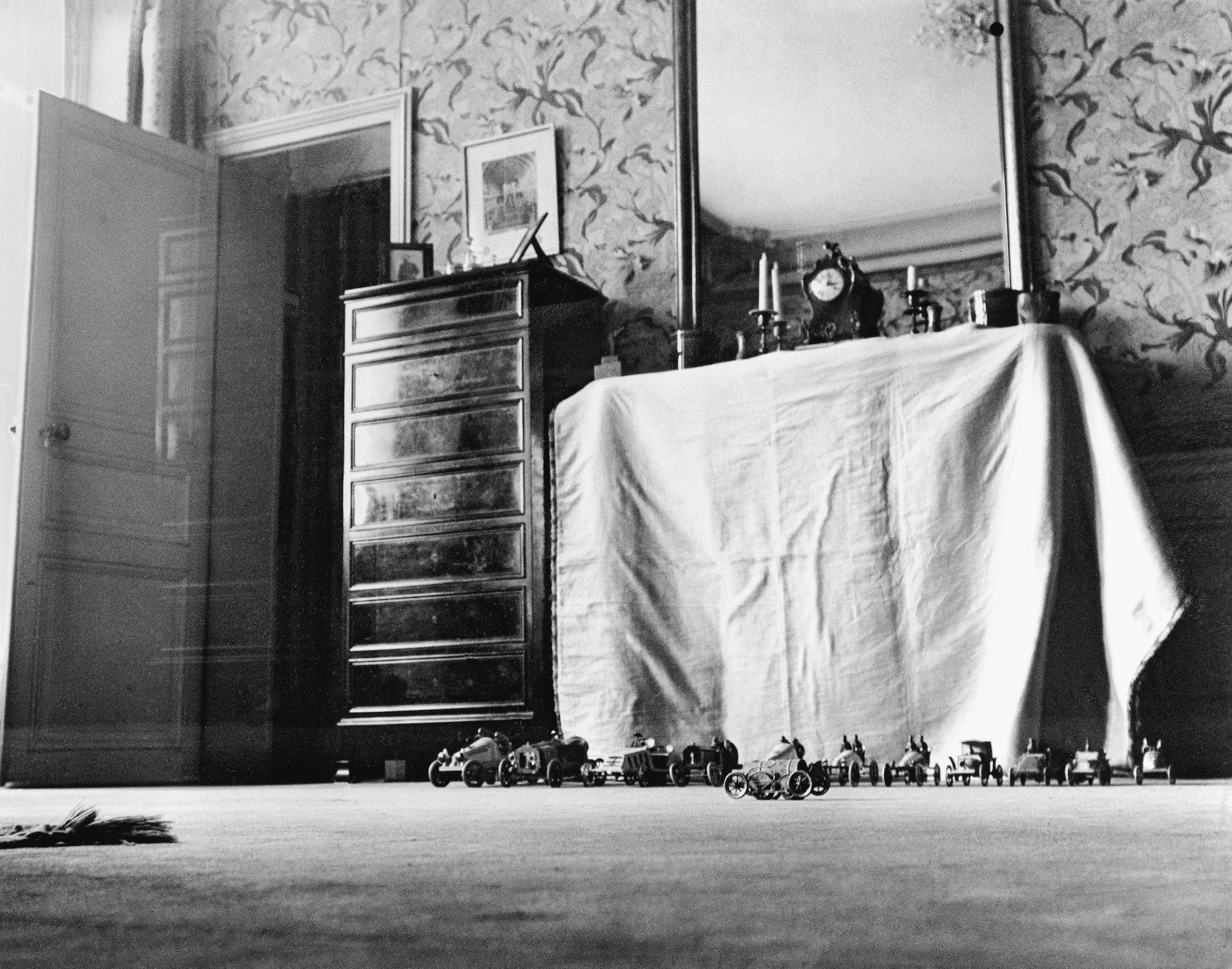
A photographer of the age of modernity
Lartigue grew up in the turn of the century when inventions were changing the way of life. Cars were taking the place of horse-and-buggies, airplanes were being designed and tested. He marveled at these fast-paced machines and as a teen he photographed gliders taking off from sand dunes and race cars speeding around the circuit. One of Lartigue’s most well-known images is “Grand Prix de L’Automobile Club de France, dated 1912”. At the Grand Prix in Dieppe, he stood right on the edge of the road and waited for a race car driver to speed by. He clicked the shutter while slightly moving himself along the car’s path and the image that emerged was astonishing for that time. With the tilting trees and spectators combined with the surreal shape of the wheel he managed to capture speed and movement itself. One can almost hear the engine roar and the wind blow as the car takes the corner. One can see the clear details of the driver and his hand gripping the steering wheel trying to manage this powerful beast while the rest of the photo is blurred showing the power and sensation of speed.
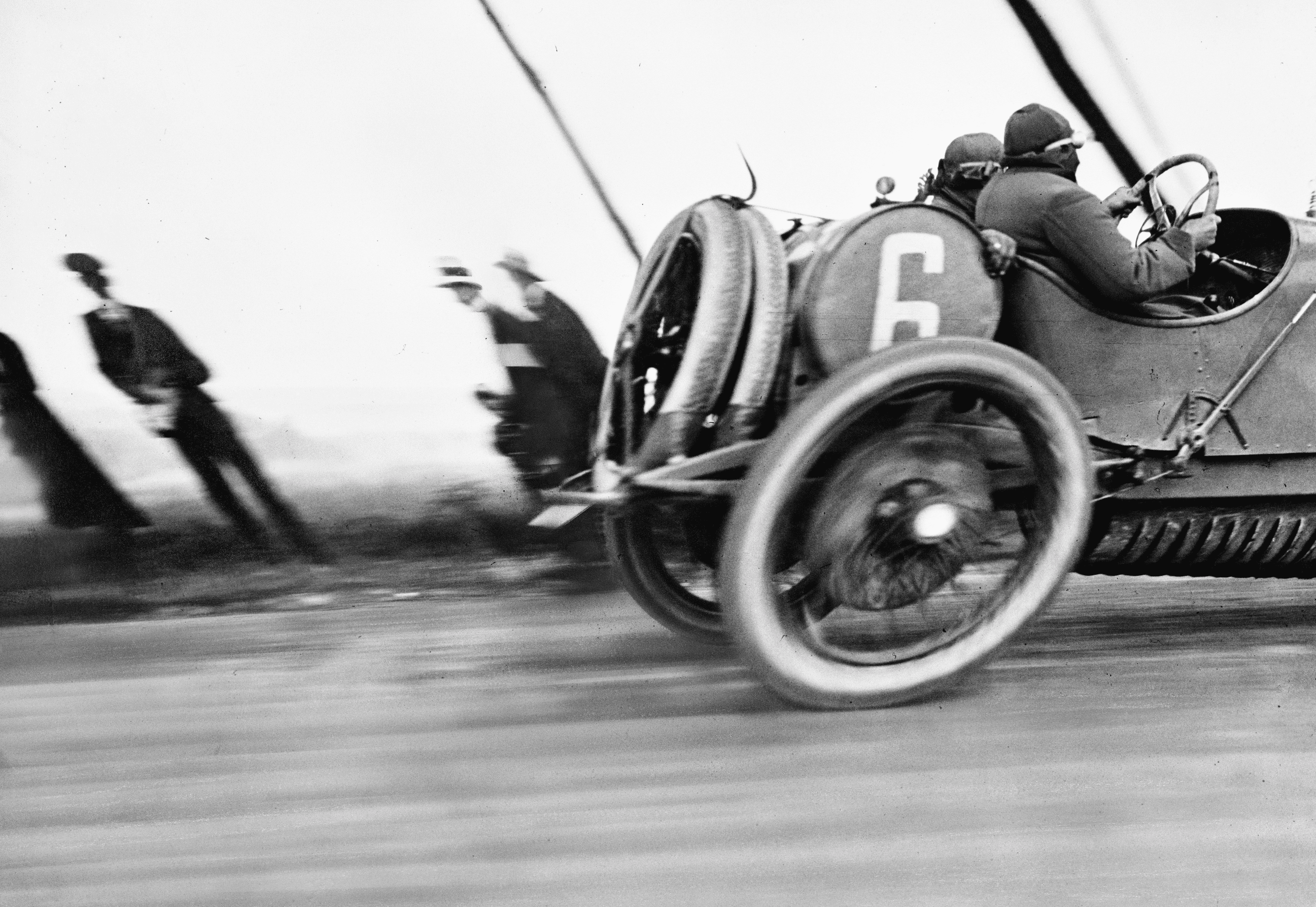
During this time of great technical innovation, Lartigue was also intrigued by the bourgeoisie. As a teen, he would slip off to the Bois de Boulogne in Paris to take photos on the Sentier de la Vertu. There he would photograph the beautiful women and men parading past him on their daily walks showing off their long dresses, furs, veiled and feather hats and jewels and top hats and canes. He was the original “street photographer”, the Bill Cunningham of the 1910’s. He would depict them showing off their finery as if they were peacocks. What seemed of the moment then is now a beautiful recording of the high life in Paris before the Wars. Around this time, he would also go to the racecourse at Auteuil and it was there that he captured a moment that would years later influence a memorable scene in a much beloved movie. In “Auteuil Racecourse, Paris, 1911”, Lartigue captured a moment in a perfect composition. Three women are standing on chairs and are all looking in the same direction at the approaching horses. The black and white vertical stripes in two of the gowns perfectly mirrors the vertical white railings they are holding onto. This photograph also reveals a softer silhouette instead of the tightly corseted fashion trend of the early 1900’s. This scene of elegance and women excitedly watching a race would inspire Cecil Beaton in designing the costumes for the crowds in the famous racing scene in “My Fair Lady” in 1964, including Audrey Hepburn’s beautiful black and white gown. This is not the only time his photographs would inspire a film. The director Wes Anderson was also inspired by Lartigue’s magical world. An image of Lartigue’s brother Zissou taken in 1909 was recreated in the film “Rushmore” (1998) with the main character, Max, taking the place of Zissou in a film still. Max sits on the edge of a go-cart posing as the Founder of the Yankee Racers wearing a cap and goggles with his knees held tightly together mimicking the comic eccentricity of Zissou in a similar photograph taken some 89 years earlier.
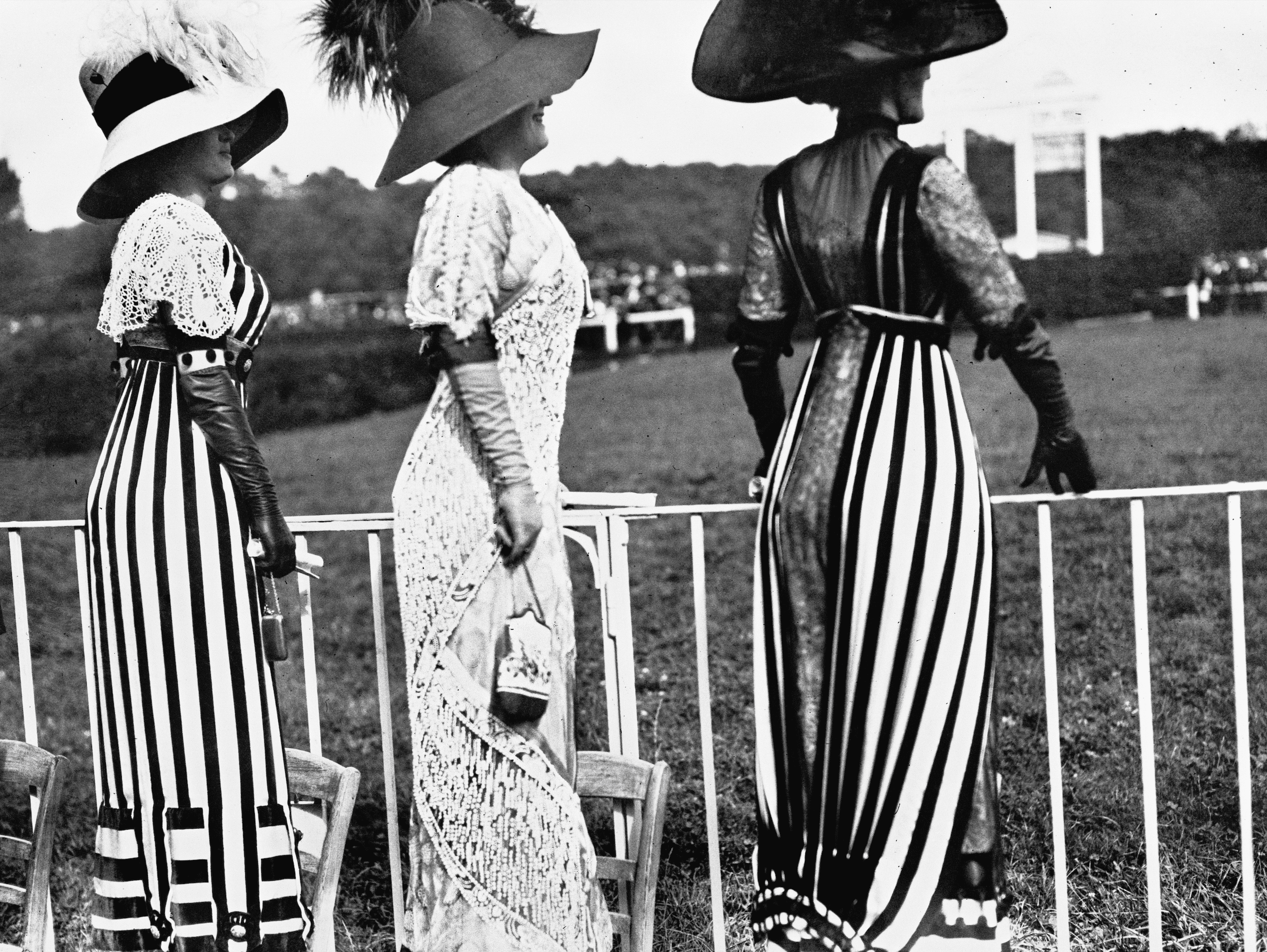
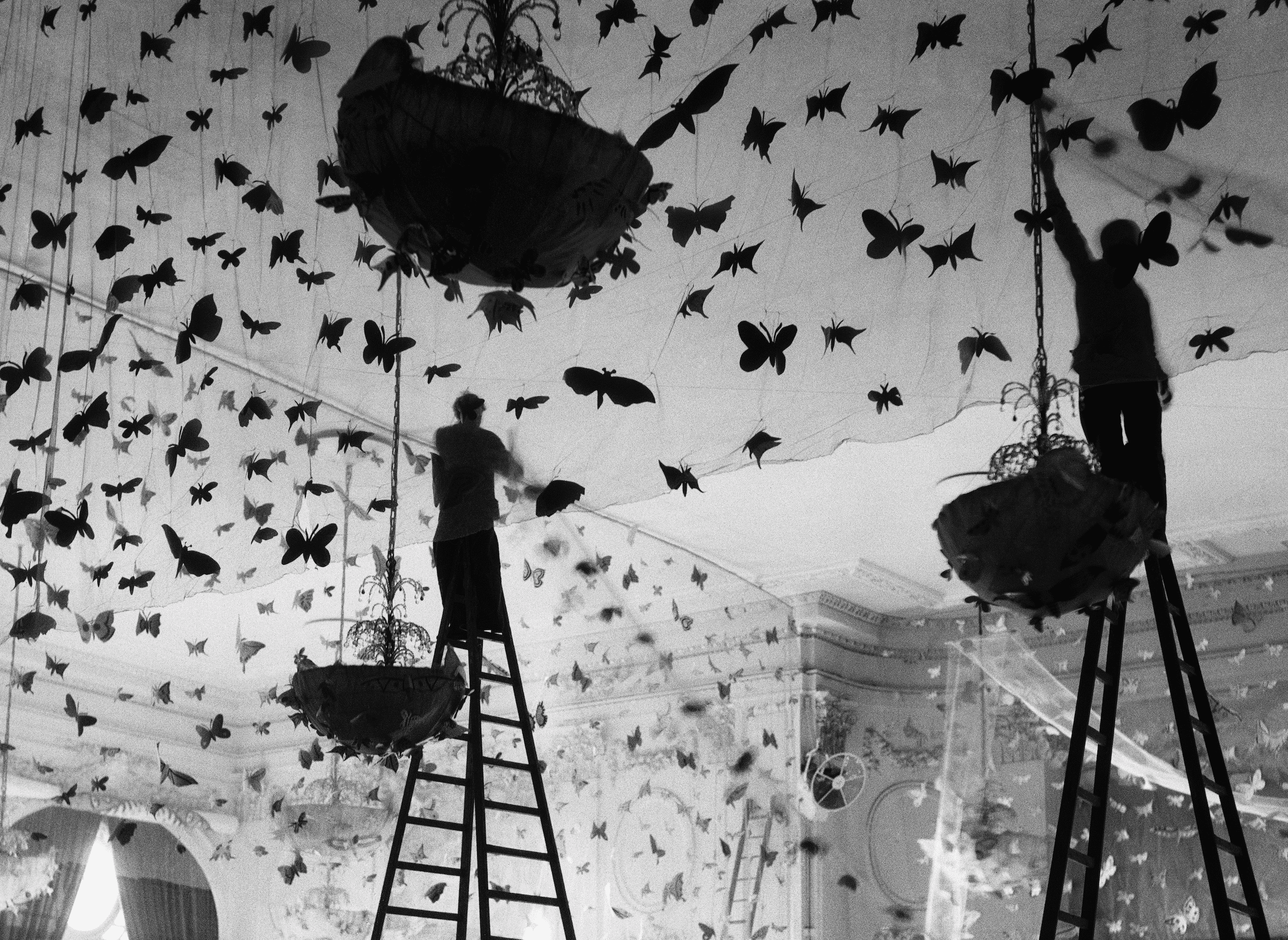
A prodigy with many gifts
Lartigue was a true aesthete. While spending time in the South of France during the 1930’s he designed and decorated lavish balls and galas at casinos along the Riviera. He also designed a table for his apartment in Paris. This stunning “modular” and elegant table appears to anticipate the coming Art Deco movement. This table appears in his album in 1919 showing it in the center of a room in his Paris apartment (2nd photo below). A later album in 1922 shows the table again but in a different setup in his apartment – up against the wall with flowers and glasses adorning the top (photo below). The table has been recreated and can now be found at auction and through Ecart International in Paris as well as online with The Invisible Collection. Lartigue was the embodiment of a Renaissance man.
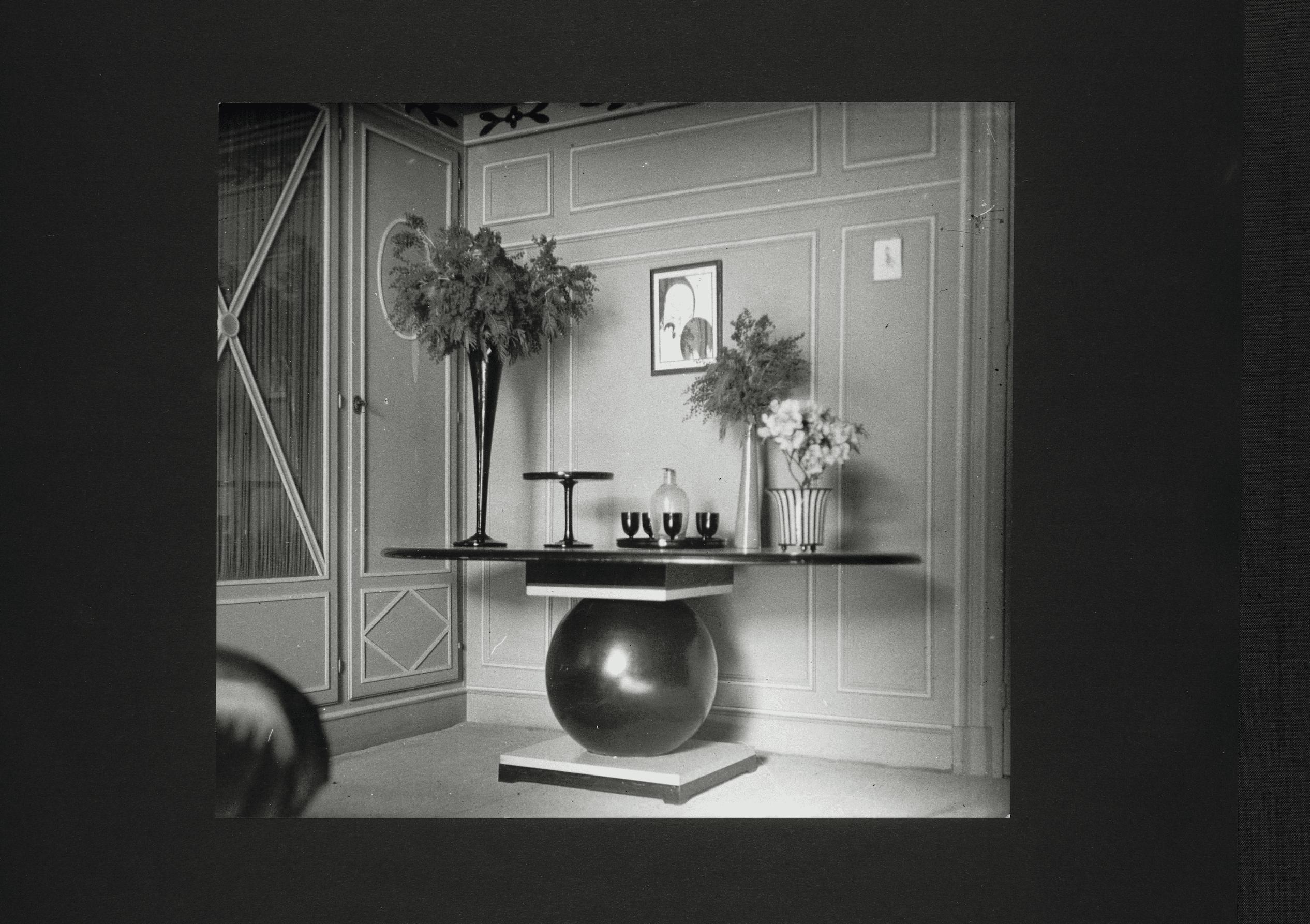
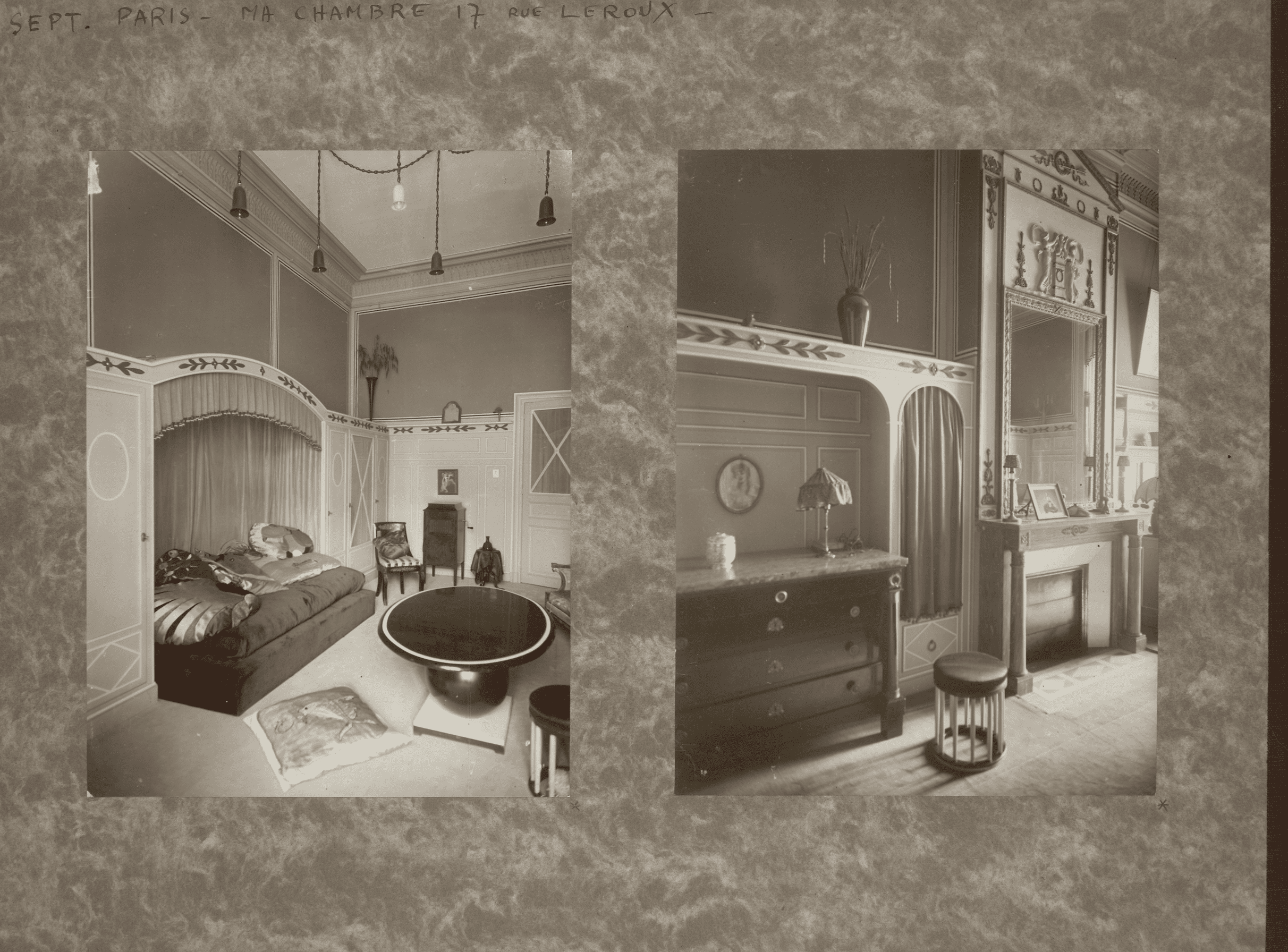
Captivating beauties
While writing this article, the hardest part was selecting which photographs to include. Over the course of his long life, he took over 100,000 images. My favorite images are those he took of the women who inspired him – his three wives and several lovers and muses. I could fill an entire coffee table sized book with these images as they are beautiful and enchanting. Renée Perle was his muse/lover from 1930 to 1932 and the photographs of her, to me, could be the forerunner of fashion photography. In the photograph, “Renée Perle, Paris, January 1931” (title photograph), Renée lounges on a couch and Lartigue perfectly captures the spirit of 1930’s France. With Renée’s arm full of bangles, heart-shaped lips à la Clara Bow and short wavy hair one feels like Renée is taking a moment of repose before the next glass of champagne is poured and the music begins. Renée had expressive hands, almost like from a Modigliani painting, and they always were an important part of the photo compositions – covering half her face, placed on a wall as the center point of an image. She was an intriguing muse and her spectacular beauty inspired some of Lartigue’s best photographs. There was just something about Renée. Tall, chic, exotic. Lartigue wrote that “around her, I see a halo of magic”. Their short time together was what Lartigue remembered as an “eternal vacation”, a dreamlike two-year holiday in the South of France. Several years ago, I was with close friends strolling the aisles of a photography fair in NYC. They stopped and gravitated towards a photograph of an enchanting woman outside walking down the stairs in wide palazzo pants, a tight tank top and a large brimmed hat. They bought it and it made me so happy as that was a photo of Renée embodying the Riviera style of the 1930’s.
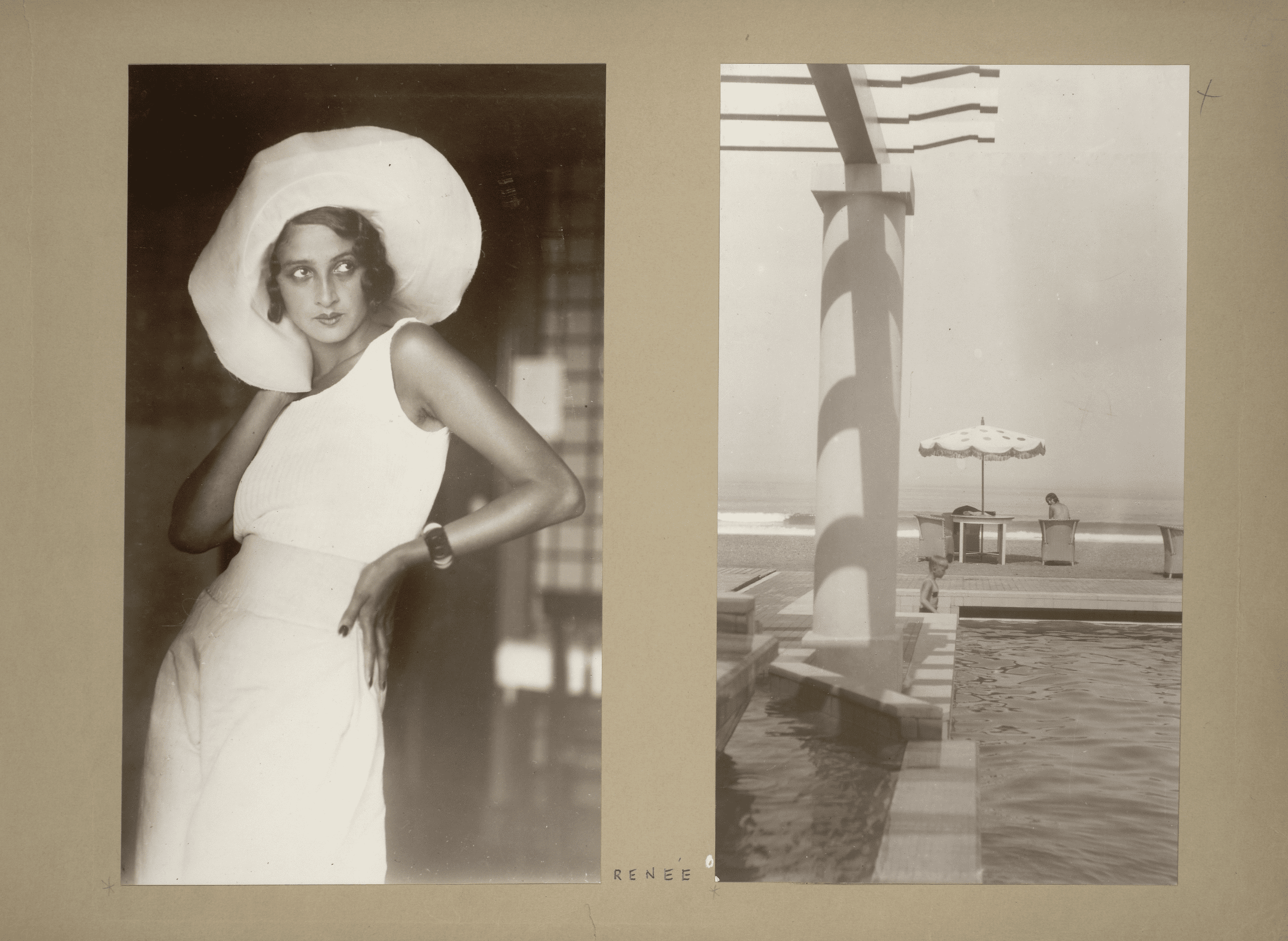
Besides being a photographer, Lartigue was also a painter and it was through the sale of paintings over time that he could support himself as a free-spirited artist. Lartigue once said, “I see everything with a painter’s eye”. This is especially true when in the 1950’s he started taking color photographs. While his black and white photography was lively and energetic, his color photography showed even more of his exuberance. It was a new visual sensation that he embraced. In the photograph, “Florette, Vence-Beausoleil, May 1954”, he captures an intimate moment. Florette was his third wife and they were married for forty years until he died. In comparison to photos of Renée, this image of Florette reflects an enduring love and companionship. The saturated color along with banded rays of light bathing the scene is balanced by the serene smile that Florette has as if Lartigue caught her in a moment of contemplation and she looks up as he enters and is happy to see him. Happiness is what Lartigue was always striving to capture in his photography and he wanted to catch a marvelous thing that goes by in half a second. He always said, “You must find something in each day to delight you”.
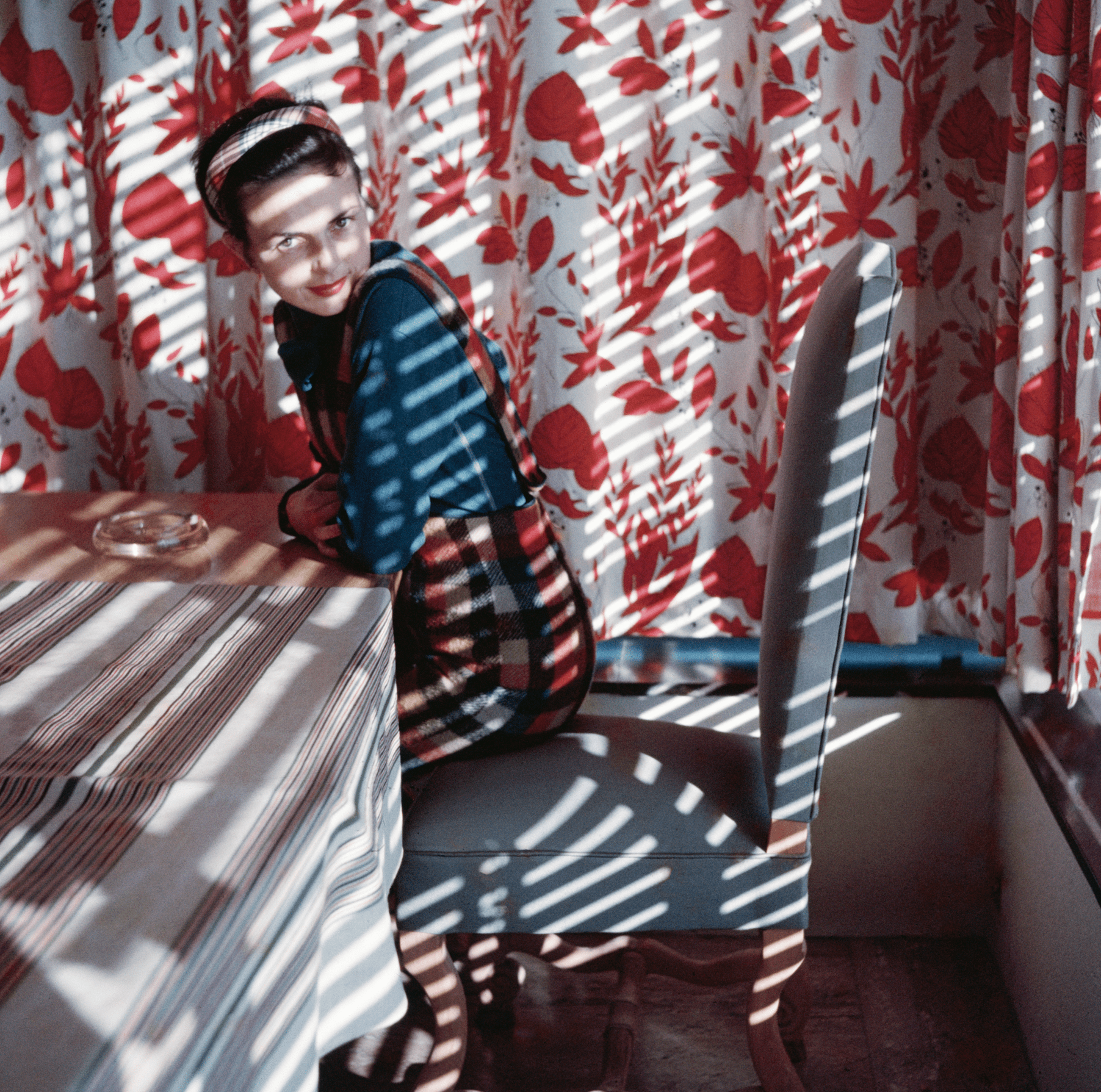
Lartigue made tens of thousands of images for his personal albums and was completely unknown as a photographer until he had a meeting arranged by a photographer friend with the esteemed photography curator at MoMA, John Szarkowski, during a visit to NYC. He was offered an exhibition at the museum on the spot and his first exhibition took place in 1963. He was “discovered” at the age of 69 and became an overnight sensation. He was a genius amateur photographer with an instinctive eye and to this day is still considered one of the greatest photographers of the 20th century.
Lartigue continued photographing up until his death in 1986. He died suddenly but peacefully at age 92. Up until the end, he still held that childhood delight and curiosity that he exhibited back in the turn of the century and through his work tried to preserve some of the “immense happiness of living”. He always signed his photographs with a hand drawn sunburst at the end of his name.
In a lovely twist of faith, one of my first jobs when I moved to NYC after school was with a private photography dealer who specialized in Lartigue. It was a joy to work with his photographs and to see Renée, Florette, Nanny, Zissou and his boyhood room up close and personal. I feel that Lartigue was a photographer ahead of his time. I often wonder what he would think about our modern days where selfies and documenting our lives consume us. I bet he would love it as he once said, “Photography to me is catching a moment which is passing, and which is true”. I think his Instagram handle would be @joiedevivre
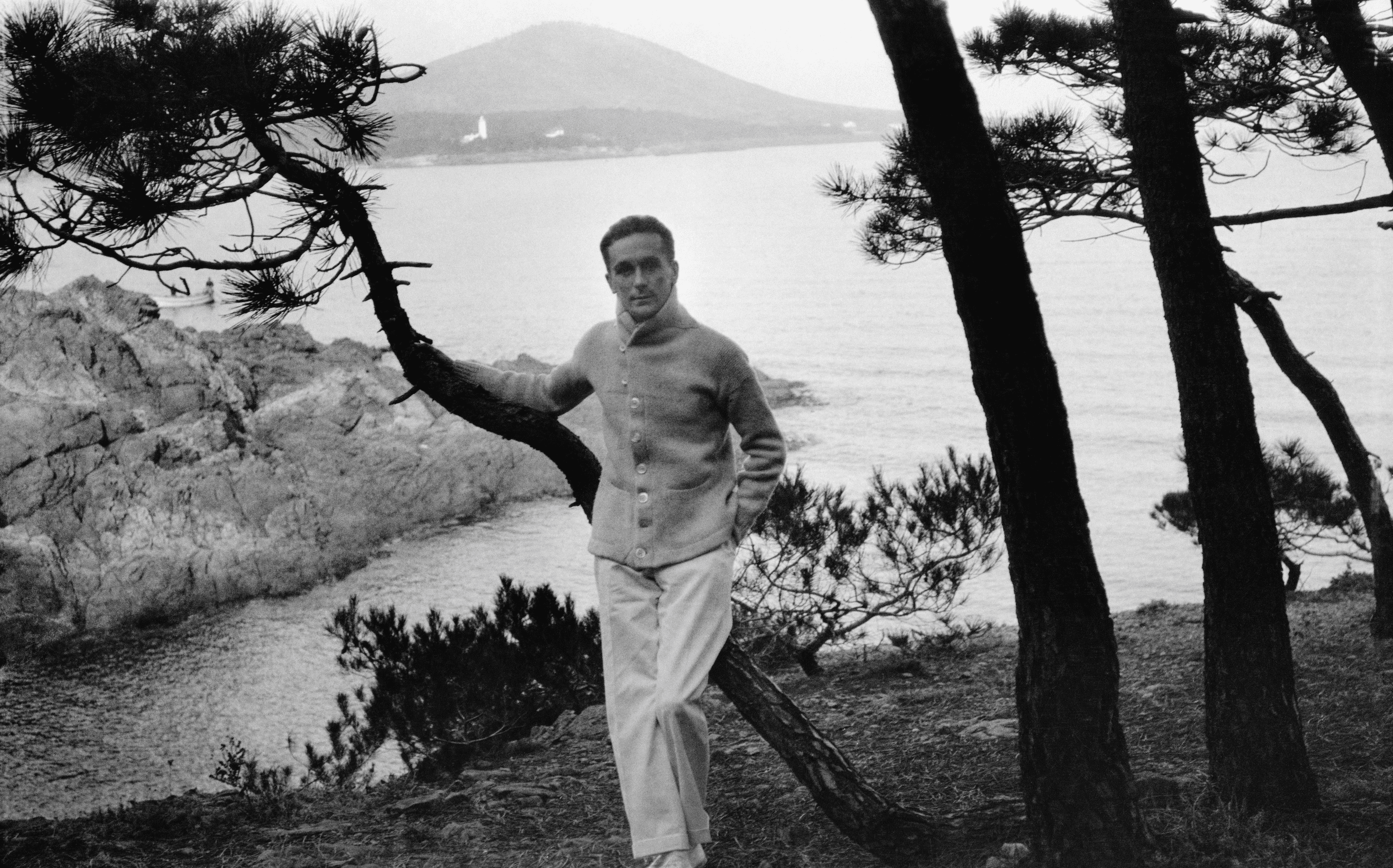
In 1979, Jacques Henri Lartigue became the first living French photographer to donate his work to the State with over 120,000 negatives, his diaries and 126 personal albums. To this day, the Association des Amis de Jacques Henri Lartigue oversees his estate by conserving and displaying his photographs. You can find more information and see images at www.lartigue.org and @donation.lartigue. Photographs can be purchased through Monah Gettner at Hyperion Press in NYC, hyperionpr@verizon.net

Jennifer Gyr is a Creative Consultant at Par Excellence. After obtaining a degree in Art History and Photography, she was a Helena Rubenstein Intern at MoMA in NYC and she completed the “Works of Art” course at Sotheby’s in London. She then worked for several years at the photography gallery Hamiltons Gallery in London and at Hyperion Press and Keith de Lellis Gallery in NYC. She was a private photography dealer for many years and served as an archivist and curator of a private photography collection in NYC. She also archived the estate of the photographer Horst P. Horst. She has curated several exhibitions and consulted on numerous photo books and exhibitions including with The National Portrait Gallery in London. When not seeking her next travel inspiration she lives in Brooklyn with her Swiss husband.
